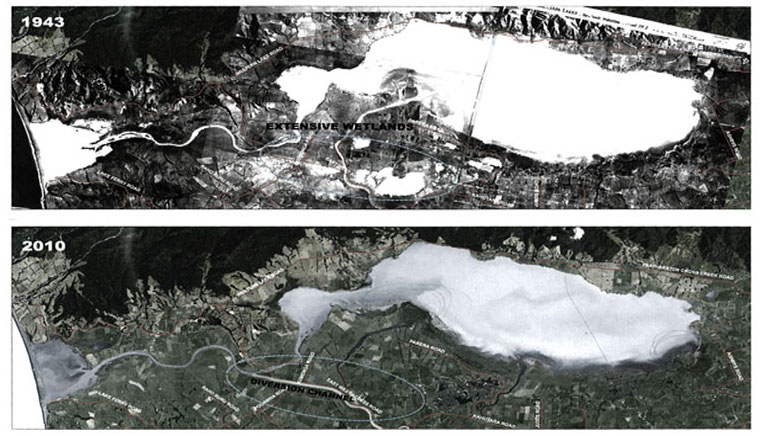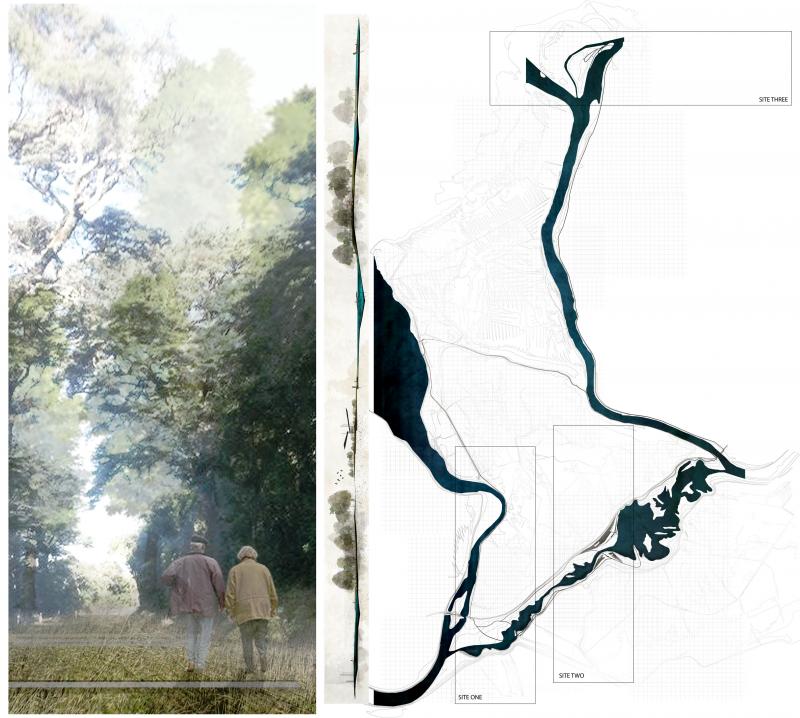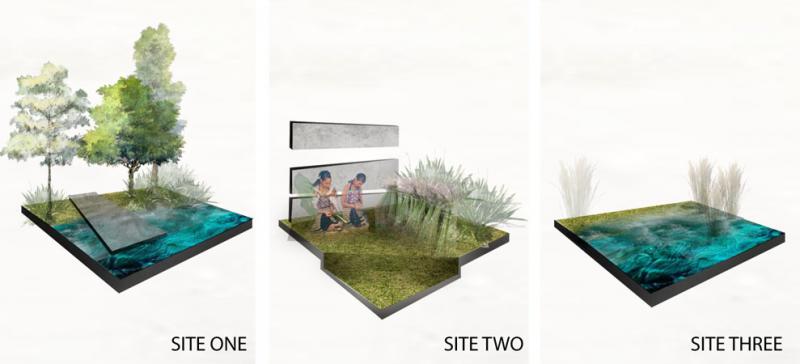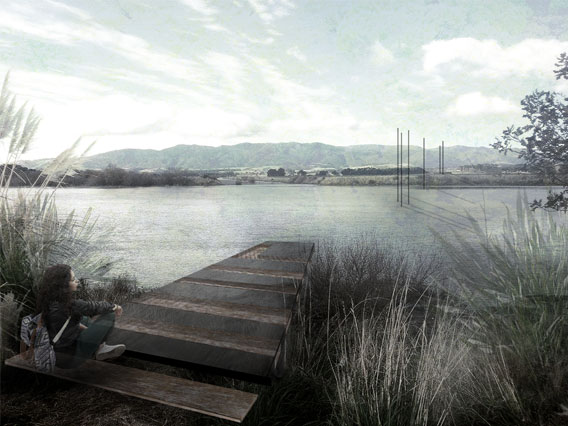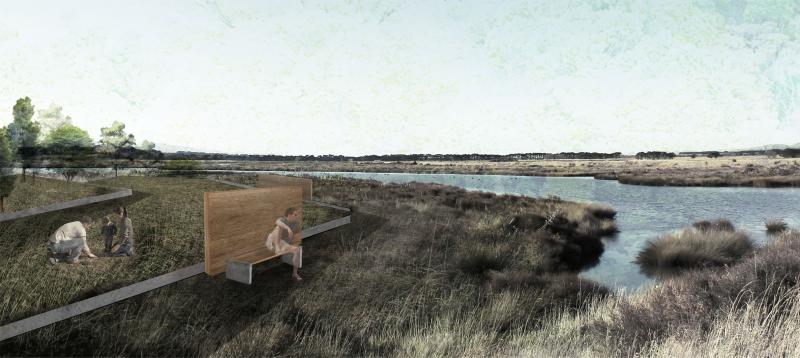Location:
Wairarapa
Iwi:
Ngāti Kahungunu
Nga Aho practitioner:
Ashleigh Hunter
Healing the land, healing the people
At a regional scale the thesis explores Wairarapa Moana. Moana being the large body of water known as Lake Wairarapa and its nearby surroundings. It is the third largest lake in the North Island and once held some of New Zealand’s most significant wetland systems. The lake in its historic state reached 210km² and today reaches a surface area of 78km². This sufficient drop in area was a loss to farming in both agriculture and horticulture, which have also now become the primary sources of pollution, adding to the decline in quality of the lake. It has been due to the addition of infrastructure such as stop banks, drains, and constant pumping stations that have allowed clearance for productive pasture, however this land still suffers from poor soil drainage and as a result drainage can be seen to have a larger area cover than the productive pasture making it difficult to understand the benefits in either two.
The region is home to two iwi, Kahungunu ki Wairarapa and Rangitane o Wairarapa. The people were put into a difficult position during settlement wars, and as a result gifted the lake to the crown. This effected the people due to the Moana being a great treasure, it held strength and reflected life. The lake and the surrounding land provided for the people through means of transport, food, medicine, material and held deep spiritual connections, it was a part of who they were.
As of late this thesis has explored design that would incorporate traditional Maori concepts. In the case of the Wairarapa these cultural concepts formed the argument around infrastructure and natural systems and has incorporated design methods to benefit agriculture and restoration.
The design research has investigated the method of Rongoā and how it can be used as a tool of restoration, the planting of natives and how these plants not only respond to the land but how they respond to the people. The plants become the site and there are all types of methods that can be applied to the learning of harvesting for material food and medicinal uses. This concept also became an approach to several design concepts to create experiential spaces for engagement in the site. The design allowed for several established connections and recreational activities that reflected the value of the surrounding landscape and the people whom are a part of it. These spaces were designed around; Whaiwhakaaro, a space for reflection, He tangata, he tangata, a space for education and restoration and mauri a space where the connections become apparent, the lake and the river meet here and it’s a place tohi can be celebrated.
The site is based along the Ruamahanga River which as over the years become a-part of a wider development scheme and was cut-off from the lake and diverted south. The first step of the design was to reconnect the lake and shape the land to its previous state of lagoons. These lagoons through conceptual design would develop into wetland typologies aiding to the improvement in the water quality and wider biodiversity.
Through the design of wetland systems and infrastructure this thesis has developed a practical and efficient scheme that mitigates the linear systems that were put in place. The system technically is a resilient tool against future change and water level rise. On an ecological view the design research led to creating biodiversity corridors and habit spaces for the growth in native fauna.
The public spaces and wetland systems create a soft edge against the agriculture development. The weaving and blurring between the surrounding landscape and the diversion can become a sensitive way in engaging communication to the adaption of sustainable farm practice, for future benefits to the land owners and the environment.
Throughout the thesis I have processed and developed an approach to which cultural concepts can aid landscape architecture and develop methods to further provide connections, experience and engagement for the people. This allows the infrastructure to become one with natural systems to create a more sustainable environment that provides ecological benefits as well as economic benefits. The thesis allows the design movement to become more fluid with the landscape, moving away from the linear functions.
